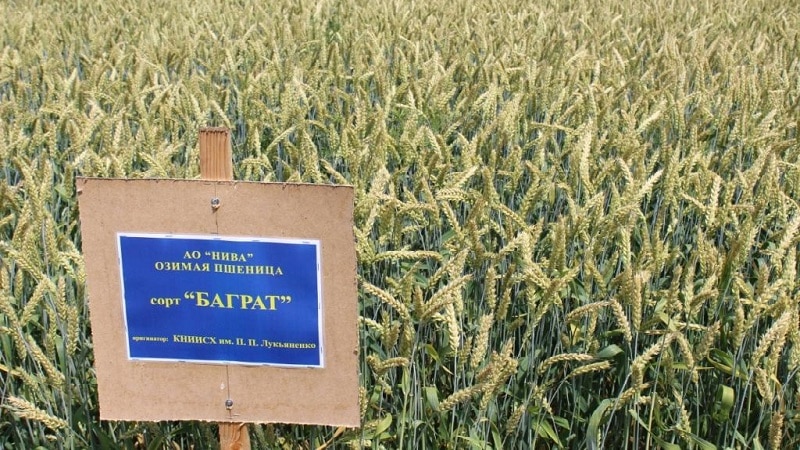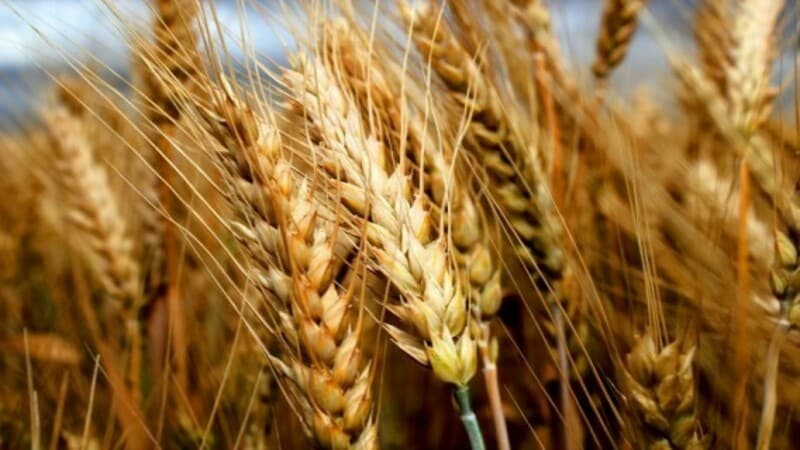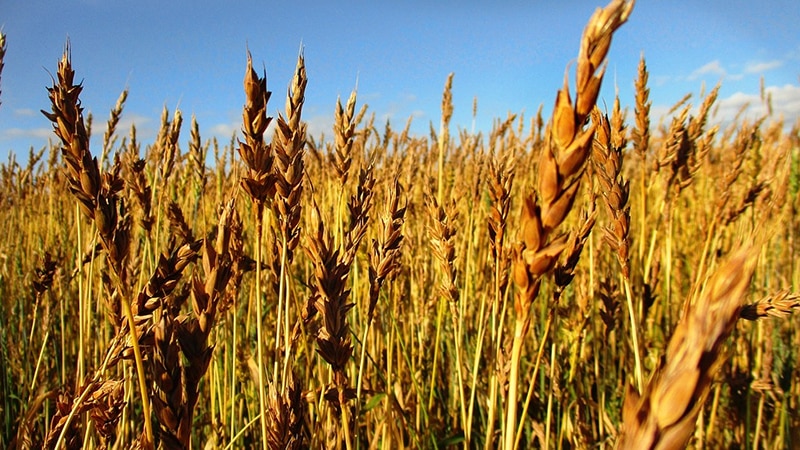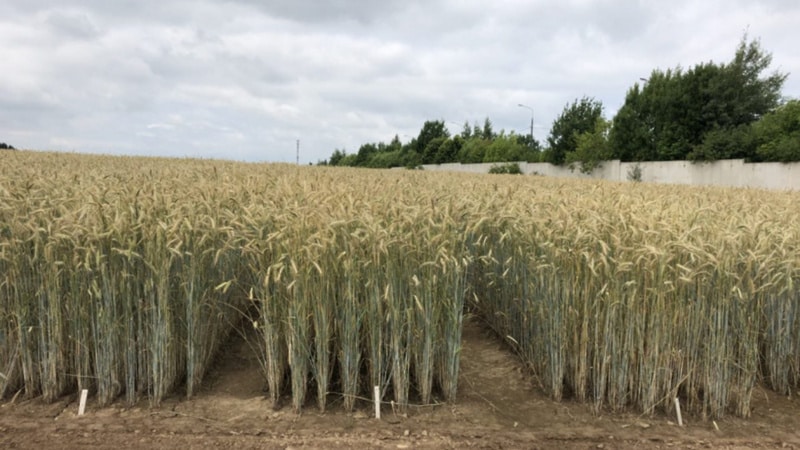Review of the best varieties of winter wheat: choosing the most fertile and resistant
Through the practice of growing winter wheat, breeders have managed to develop varieties that produce high-quality and abundant harvests. We have prepared a review of varieties that have shown the best yield and are actively grown by producers on an industrial scale.
Requirements for the characteristics of wheat for winter planting
Despite high yields in general, it happens that winter crops do not germinate or produce an insignificant harvest. This happens because the growing requirements were not taken into account.
Significant factors:
- frost resistance;
- drought resistance;
- soil type that is optimal for a particular varieties;
- correct predecessors: it is better to sow wheat after harvesting early potatoes, peas or corn.
The best varieties of winter wheat
All varieties of winter wheat are divided into two categories:
- Soft grown in areas with high rainfall and humidity. Externally, the plants are stalks with thin walls and glassy, mealy grains of white or brown color. It is from these varieties that baked goods are subsequently prepared.
- Solid grow in places with a dry climate with little rainfall. This type of wheat has a thick stem and small, hard grains of yellow or brown color. First-class pasta is prepared from it.

Thunder
A drought-resistant, mid-season variety of soft type suitable for feeding poultry and livestock. It is resistant to lodging and the ears do not fall off, which is why it is very popular among farmers.
Thunder is planted from August to October at a temperature of +14...+16°C.
Tanya
Semi-dwarf early ripening variety, resistant to lodging. The spikelets are straight, relatively dense, cylindrical or pyramidal in shape. The grains are large, ovoid.
The variety is highly resistant to leaf rust, fusarium head blight, and dusty smut. Used for grinding flour and preparing baked goods. Experienced farmers sow Tanya after harvesting corn.
Favorite
Winter wheat, ripening from 283 to 287 days. It is characterized by an average ear length, 96-105 cm, and high resistance to frost.
The grain is ovoid, large. Productivity – 11 t/ha. Universal application.
Shestopalovka
An adult plant reaches 90 cm in height. Ripens in 280-285 days. Has spikelets the color of hay.
The variety is resistant to frost and dryness, lodging and diseases, does not overripe, the spikelets are not prone to shedding.
Podolyanka
The variety was bred in Ukraine. Ripening period is from 305 to 310 days. The stems of the plant reach 100 cm. It has egg-shaped grains of red color.
High productive bushiness. Productivity – 59 c/ha. Podolyanka is resistant to frost and aridity.
Stanichnaya
Stanitsa winter wheat has spikelets of medium length and density. The grains are red, ovoid in shape. Suitable for use in baking.
This wheat is characterized by a high degree of resistance to drought and frost. The average yield is 5.6 t/ha. The gluten content in the grain is 27.5%.
Important! Stanichnaya does not require the introduction of chemicals.
Graph
Ripens in 224-286 days. It has average resistance to frost and dry climates.
The baking value is high.It is resistant to grain diseases, but can suffer from fusarium head blight and smut.
Edge
It has short stems reaching 95 cm and does not lodge. Ripens in standard terms (210-280 days).
The productivity of Gurt is above average - 91.1 c/ha. The variety is valued in flour milling and baking.
Prikumchanka
The hard variety is characterized by high winter hardiness. Of all the diseases that can affect Prikumchanka, only septoria is called. No other diseases have been identified so far.
The average yield is 34.1 c/ha. Grown in the North Caucasus, in the Volga region.
Amber of the Volga region
The growing season is 309-326 days. The variety is not resistant to frost, but takes root well in the central and southern regions of the country. May be damaged by brown rust.
The plant grows up to a maximum height of 115 cm. Productivity is 11 c/ha.
Don 105
One of the best varieties of winter wheat. It is frost-resistant, drought-resistant, and does not exhibit shedding or lodging. Don 105 is immune to loose smut and brown rust. It reaches a height of 96 cm. Productivity is 5.5 t/ha.
Antonina
This variety is characterized by low stems. Antonina is a mid-late cereal; it is not afraid of lodging and shedding. The cylindrical spikelet is light brown in color and grows up to 11 cm. The grains are large, red, and long.
Antonina has a high yield - 80.6 c/ha. Resistant to dryness and frost.
Leukurum 21
Average in all main characteristics - drought, frost, and disease resistance. Leukurum 21 gives an excellent yield - 100 c/ha.
Possible diseases include fusarium and stem rust.
Alyona
It ripens early, in 250-258 days, and at the same time has good disease resistance, not counting isolated cases of smut.
Does not lodge, tolerates cold. It reaches 94 cm in length.
Governor of Don
High-yielding wheat - up to 100 c/ha - calmly tolerates dry and frosty weather and the appearance of an ice crust. Ripens within 235-296 days.
The bush is semi-straight, can reach a height of 94 cm. The spike is white, cylindrical in shape. Bakery products are made from this type of flour.
However, Governor Don has a significant drawback - it is not very resistant to brown rust, gray mold and powdery mildew.
Scarlet Sail
A distinctive feature is immunity to smut. Mid-early, lodging-resistant durum wheat variety. Productivity – up to 65 c/ha.
Grows up to 105 cm in height. Used for making pasta.
Moskovskaya 39
An important characteristic is the increased protein content in the grain (1.5-2% higher than the standard).
To frost and lodging Moscow 39 shows resistance, but tolerates drought worse. Diseases rarely affect this plant, and it is not susceptible to head smut and septoria at all.
Nemchinovskaya 57
A mid-season winter-hardy plant with a height of 90-105 cm. It is resistant to dry weather and lodging. In the Central region, 34 c/ha is collected.
Mill
The plant is of medium height and has cylindrical, white, medium-dense spikelets. Ripens from 218 to 275 days.
It has average resistance to drought and frost. Is immune to loose smut. The variety is early ripening, with high baking value.
Yuka
Refers to precocious varieties, does not lodge. Resistant to cold weather. The height does not exceed 1 m. It is resistant to bending of the stems and does not crumble.It is characterized by increased productivity - 50-80 c/ha.
Mironovskaya 808
The mid-season variety ripens in 300-310 days. The grain is oval-elongated, glassy. Winter hardiness and drought resistance are above average. Productivity exceeds 50 c/ha.
Bezenchukskaya 380
Wheat is not susceptible to droughts, frosts and practically does not suffer from grain infectious diseases.
Bezenchukskaya 380 is cultivated in the Ural, Central and Volga-Vyatka regions, as well as within the Central Black Earth Region. The plant matures in approximately 335 days.
The most resistant varieties

Ukrainian agronomists took a responsible approach to determining the most resistant and productive varieties of winter wheat. Their achievements include the selection of the Kharkovskaya variety (96 and 105). These plants are unpretentious and can withstand severe frosts. Another significant advantage is that it is possible to get a high-quality harvest even if it is late sowing after the sunflower harvest (which in itself is an unfortunate combination).
The varieties Vasilina, Kharust and Astet are as universal as Kharkovskaya. They are winter-hardy and disease-resistant. These varieties have shown the best yield results in our country and abroad. They are recommended by experienced and professional agronomists and farmers as they meet all requirements and give the best results.
New varieties and hybrids

We invite you to familiarize yourself with the characteristics of recently bred varieties and hybrids.
Ascetic
Spindle-shaped ears of medium height and density, white. They ripen in 270 days. The variety has average winter hardiness, is not prone to lodging, and is resistant to drought.
Due to disease resistance and high baking value, it is popular among grain producers.
Ermak
It is distinguished by strong and high-quality grains intended for grinding flour and preparing baked goods.
In addition to resistance to frost, Ermak is practically not susceptible to infectious diseases characteristic of cereals.
Important! The variety does not require chemicals, the wheat is adapted to late planting and does not lie down.
Rostovchanka-7
Valuable wheat does not suffer from winter frosts. Common cereal diseases do not affect Rostovchanka-7.
Highlight
The variety is grown in the North Caucasus region, has immunity to cereal diseases, and is also adapted to the local climate. One of the most productive new varieties - 7.86 t/ha.
Hybrids
Breeders have developed hybrids that are particularly frost-resistant and have a large number of seeds per ear. As a rule, the stems of such plants grew short. All of them turned out to be stronger and more productive than the parent varieties.
The most famous:
- Albidum 114 × Mironovskaya 808;
- Albidum 114 × Bezostaya 1;
- Bezostaya 1 × Mironovskaya 808;
- Kuibyshevka × Albidum 114.
Tips for choosing

Varieties are chosen taking into account regional specifics - the future harvest depends on this.
Varieties of winter wheat common in our country and optimal growing regions:
- Bezenchukskaya 380 – central Russia, its central regions;
- Nemchinovskaya 57 – Moscow, Tula and regions;
- Mironovskaya 808 – Siberia, Ural;
- Moscow - Far East, Central and North-Western regions;
- Yuka – North Caucasus region;
- Governor of Don - North Caucasus, Stavropol Territory, Rostov and Belgorod regions;
- Antonina, Scarlet Sail, Don 105 and Tanya - North Caucasus.
Conclusion
Compliance with established sowing rules and care for growing wheat produces a good harvest only if both temporary and regional planting requirements are taken into account. In addition, it is important to experiment and in practice select the variety that is optimal for growing in a particular area.